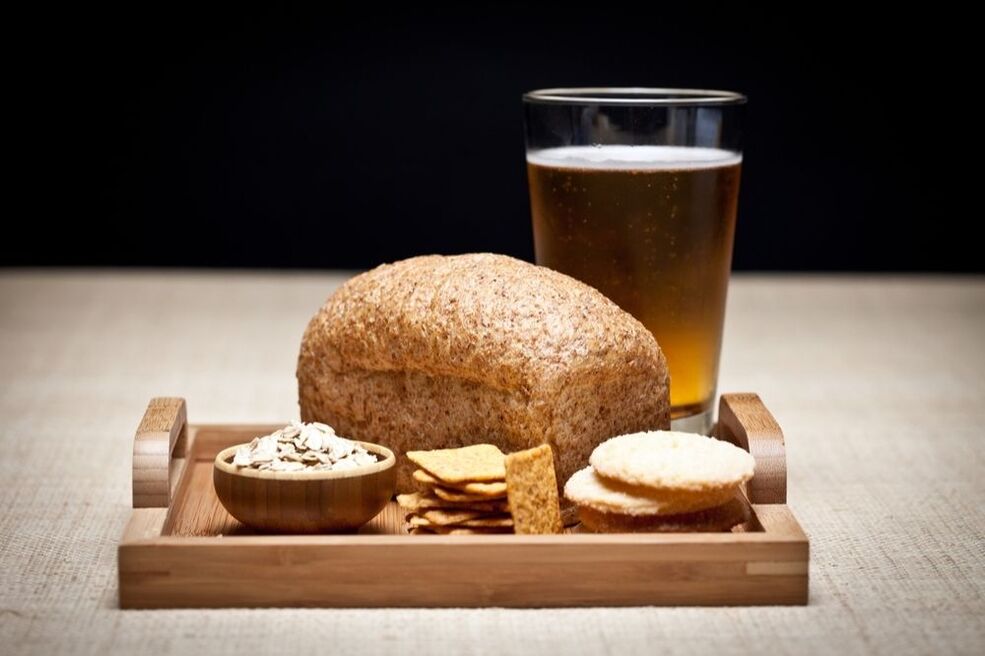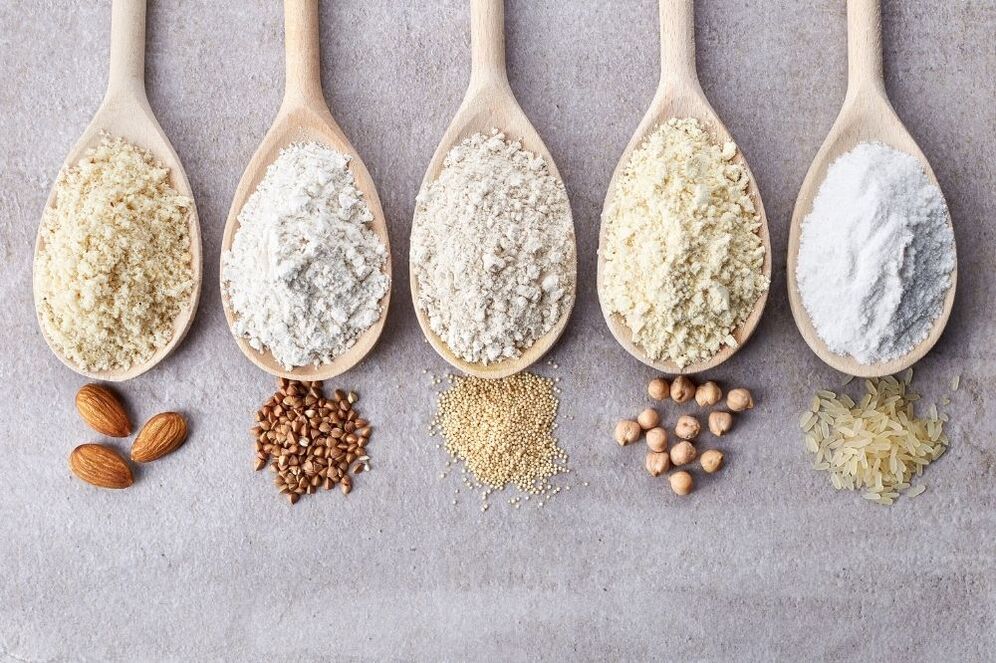Step 1. Identify the enemy by sight
The first step is to find and eliminate gluten-containing foods and dishes from the menu. There are many of them.
The obvious ones that everyone knows include:
- cereals (wheat, rye, barley, semolina, bulgur, couscous and spelt);
- wheat products: flour, bread, cookies and pastries, pasta, breakfast cereals, children's cereals.

If everything about flour and cereals is already clear, then many people do not know about some products that contain gluten.
For example:
- dairy products with store-bought additives and thickeners (cottage cheese, yogurts, cheese curds, milk powder, processed cheese),
- semi-finished meat and fish products (especially bread),
- dumplings, pancakes, dumplings,
- ice cream (not only because of the waffle cone, but the ice cream itself often contains gluten),
- sausages, preserves, imitation seafood ("crab meat" and "crab sticks"),
- chips, bread and crackers.
Wheat gluten and protein can result from food colors and additives. Therefore, even spices and bouillon cubes, sauces (soy, ketchup, teriyaki, tomato paste, many other sauces where flour is used for thickening), chocolate, coffee and alcoholic beverages (beer, vodka, whiskey, paints or flavored wine)beverages and aromatic additives).
Recommendations
- Read labels carefully. Pay attention to the traces of gluten in the ingredients. Whenever possible, choose products labeled "Gluten-free" or "Gluten-free", which can be found in the diet section of supermarkets.
- Eat whole foods: fresh meat, seafood, eggs, vegetables, fruits, legumes, nuts and oils.
Step 2: Replace gluten with healthy alternatives
Flour from cereals and legumes - instead of wheat.
- Flour for bread, pasta, pastry, pancakes and desserts can be made from grains, nuts and legumes.
- Buckwheat, rice, pea, soybean, flax, corn, and almond flour are great for these dishes. It's easy to do it yourself, just grind the ingredients in a special grinder.
What is important to know for making flour
- To get the most out of your homemade flour, we recommend pre-soaking the seeds and nuts and then drying them in a dehydrator. This will reduce the concentration of phytic acid in the seeds, which interferes with the normal absorption of minerals from plants.
- It is better to grind the flour in small portions immediately before eating. This will help prevent oxidation of the seeds and preserve all the useful substances.

Breakfast is not just oatmeal and sandwiches
- There are many equally tasty alternatives: homemade yogurts from the fermenter, potato pancakes, smoothies and colorful dishes, pancakes and pancakes made from buckwheat or rice flour.
- For breakfast, you can make healthy green buckwheat granola in the dryer or cereal in the grinder.
- If it is difficult to imagine your morning without porridge, buckwheat, rice, millet, gluten-free oatmeal, amaranth and flax will help.
Legumes and grains - instead of pasta
- As a side dish for lunch, you can eat gluten-free legumes or cereals (rice, quinoa, polenta, millet, amaranth, buckwheat, corn).
- You can replace your regular pasta with rice, buckwheat and bean noodles, or make pasta with gluten-free flour.
- Meat and fish can be cooked in crushed corn flakes, and the batter can be made from chickpea or rice flour.
- It's easy to thicken sauces and gravies using potato or cornstarch.
- Instead of bouillon cubes and store mix, try homemade seasonings: dry vegetables and herbs in a dehydrator or grind them in a food mill or blender. You will get a natural aromatic spice. Dried mushroom or meat powder will add a rich flavor to broths and sauces.

A gluten-free snack
- For snacks, try homemade potato chips or gluten-free bread in the dryer.
- Pieces of meat and fish can be dried to create natural and satisfying snacks.
Sweets have not been cancelled
- Use walnut or rice flour to make them.
- Instead of store-bought cream, use coconut cream or homemade coconut yogurt from a fermenter.
Good alternatives to store-bought sweets are fruit chips and dehydrator lozenges, as well as healthy candies made with nuts and dried fruit (without oatmeal).
Step 3. Prepare gluten-free baby food
- Prepare the same dishes only from gluten-free flour and cereals (we have already discussed options for pasta and cereals above).
- Try making pancakes, pancakes or cheesecakes with coconut, buckwheat or rice flour.
- Dumplings and dumplings can also be made from rice flour.
- Sweet bars, cookies and candies can be made from nuts, dried fruits and cocoa crushed in a blender (and even turn it into a cooperative game, for example, making cookies of different shapes from coconut and banana).
- Do not forget about vegetable and fruit chips (instead of store-bought crackers), marshmallows and natural ice cream.
Gluten Free Recipe Ideas
| Menu #1 | Menu #2 |
Breakfast Linseed porridge with fresh fruit |
Breakfast Green buckwheat granola + boiled egg |
Supper Pumpkin soup with flax bread and avocado salad |
Supper Homemade borsch with cashew sour cream Cabbage rolls stuffed with soy and lentil sprouts |
Afternoon snack Fresh vegetables with homemade hummus |
Afternoon snack Gluten Free Avocado Bread |
Supper Zucchini pasta in tomato sauce with herbs |
Supper Risotto with curry chicken legs and cashews |













































